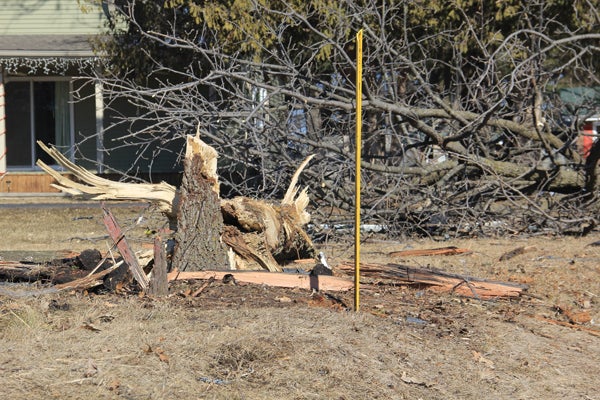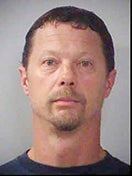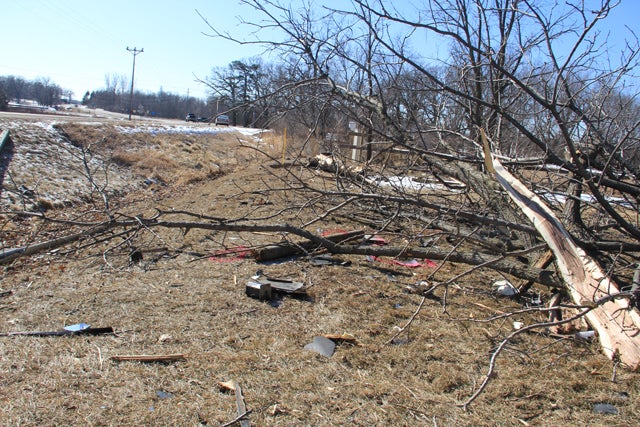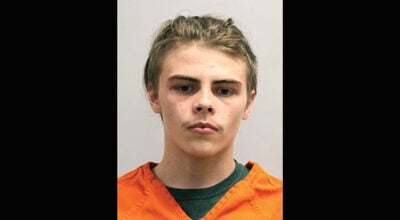GUILTY: Jury says Fredrickson committed vehicular homicide
Published 9:43 pm Wednesday, January 15, 2014
The jury deliberated well into the night while anxious family members and friends waited outside the courtroom, but at about 9:30 p.m. Judge Donald Rysavy finally read the verdict: Jason David Fredrickson was guilty of felony criminal vehicular homicide.
The jury convicted Fredrickson, 45, of Elkton, on four of six total charges, including two for criminal vehicular homicide with alcohol concentration of 0.08 or more, and two for criminal vehicular homicide by operating a vehicle with negligence. The jury did not find Fredrickson guilty of counts five and six: criminal vehicular homicide by operating a vehicle in a grossly negligent manner.
Fredrickson was convicted as the drunken driver in a crash south of Austin that killed Jacob Moe and Luke Unverzagt on Feb. 25, 2012. Both victims were 32 years old. All three men were ejected from the vehicle.
Tension filled the dead-silent courtroom just before the verdict, and then there were tears and sniffles from both families. Many breathed sighs of relief and gathered for hugs, while others quietly left the building without saying anything.
Mower County Attorney Kristen Nelsen and assistant attorney Jeremy Clinefelter praised the jury for its six long days of work, and its dedication to the trial.
“We appreciate how serious they took it,” Clinefelter said.
The two had sympathy for the families, too.
“In the end, there are still the families,” Nelsen said. “Luke and Jake are still gone, and we can’t bring them back.”
Fredrickson’s attorney, Eric Nelson, would not comment about the jury’s decision, or if he will appeal it. Fredrickson left the courthouse with his family Wednesday night. Of course, not everything with the case is complete, though.
Fredrickson will be allowed to stay at home before he is sentenced in March, as his attorney pointed out Fredrickson made all court appearances and never violated his previous conditions of release from jail. However, Fredrickson was told to check in with Mower County Correctional Services on Thursday for further instructions.
The evidence
The trial began last week, but the case had been unfolding for more than a year. Attorneys for the prosecution and defense focused on the placement of a shoe found in the obliterated 2009 Cadillac STS, the physics of the crash, and an inadvertent admission by Fredrickson, according to the man who served him with a summons. That man, Joel Solomonson, testified last week that when he served Fredrickson with a summons for a civil lawsuit, Fredrickson said he was the driver, but then quickly said, “Well, we really don’t know who was driving.”
Then, on Tuesday, the last witness of the day threw the jury a curve ball. Fredrickson’s wife, Tamara Fredrickson, testified that Solomonson gave the papers to her, not Jason.
The prosecution didn’t spend much time cross-examining Tamara. It simply wanted to move on with the trial at that point.
However, attorneys spent much of the day before that arguing about the crash reconstruction, as it could offer clues to who drove. Prosecutors called two crash reconstruction experts on Tuesday — one who was convinced Fredrickson crashed the car — while Nelson kept passing notes to his own expert witness, crash reconstructionist Daniel Lofgren. Lofgren finally testified on Wednesday. Lofgren’s account, as the jury already knew, was going to be much different.
What happened to the car?
By all means, Lofgren is qualified in his profession, as he has completed thousands of crash reconstructions under state patrol training and as a private consultant. Minnesota State Patrol trooper Mark Inglett and former Minnesota State Patrol Crash Reconstruction Coordinator Paul Skoglund — who testified for prosecutors on Tuesday — agree with that.
Lofgren agreed with previous information mentioned several times throughout the trial, such as the car was traveling 129 mph five seconds before leaving the curved road with a 40 mph speed limit. From there, though, opinions differed. Lofgren thought the car would have rotated counterclockwise — not clockwise, as the prosecutors’ experts testified — after leaving the ditch, snapping a utility pole and then smashing into and splintering a tree.
“That will tend to induce a counterclockwise rotation,” he explained.
Lofgren indicated the car was sent into a barrel-roll motion, but he couldn’t say which direction. After several minutes of his explanation, Clinefelter pulled Lofgren in front of the jury, and with model cars and pencils the two argued their points. Clinefelter tried to illustrate Lofgren’s point, but kept reaching contradictory conclusions, with the car being upside down or doing a full roll, which didn’t seem possible. He wanted a sufficient explanation.
“Well, you’re the expert,” Clinefelter said. “You’re the one saying it’s rolling, not me.”
The two also talked about the back end of the car striking and moving a fence. In a clockwise rotation, the rear end of the car would have been traveling toward the fence, Clinefelter said. In a counterclockwise motion, it would have been traveling the other way, he said. Lofgren couldn’t explain that, or how the car would have corrected its orientation after apparently going into a rolling motion.
“Don’t you think that’s a problem for your conclusion that you can’t tell us what that is?” Clinefelter said.
One more thing …
Prosecutors moved to their final arguments and acknowledged the lead detective’s work in the case was insufficient. However, it didn’t ruin their case, they said, and they mentioned plenty of others did good work. Clinefelter alluded to Unverzagt’s and Moe’s familiarity with the stretch of road, as they traveled it often and lived in the area, and Fredrickon’s possible inexperience with that section south of Austin, and the fact the car was his.
He tried to explain Tamara Fredrickson’s contradicting testimony about the day Solomonson served the summons, as well.
“One of the ways to determine credibility is, ‘Who has something to gain?’” Clinefelter said. “What does Mrs. Fredrickson have to gain if you disregard this evidence?”
But for roughly an hour, in his closing argument, Nelson adamantly told the jury that nearly all of the evidence was inconclusive. He repeatedly referred to investigation mistakes, and items not tested.
“This was not a meticulous investigation,” he repeatedly said.
In the end, Clinefelter pointed out what he called irony — that Lofgren based his crash reconstruction off of the other experts’ contradictory reconstruction, instead of doing his own from scratch.
If these two troopers’ reconstruction didn’t make sense, Clinefelter said, why was he using it as a starting point for his?







